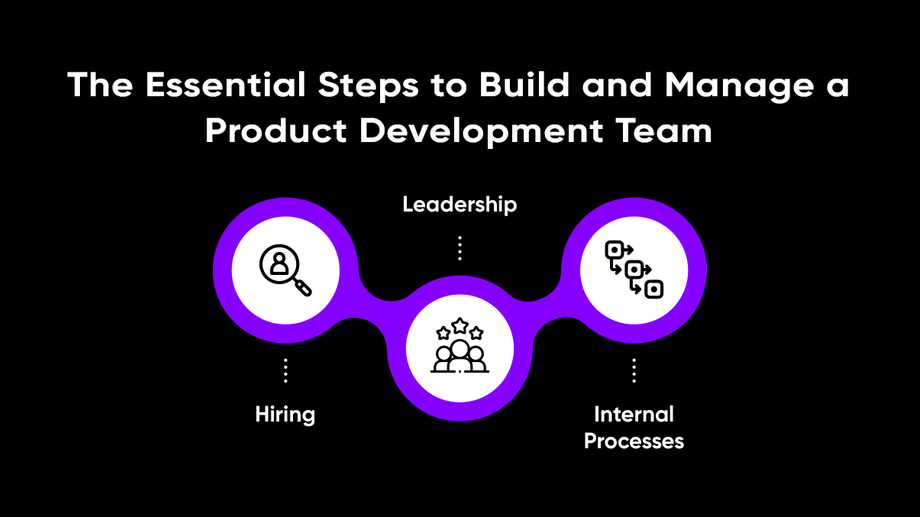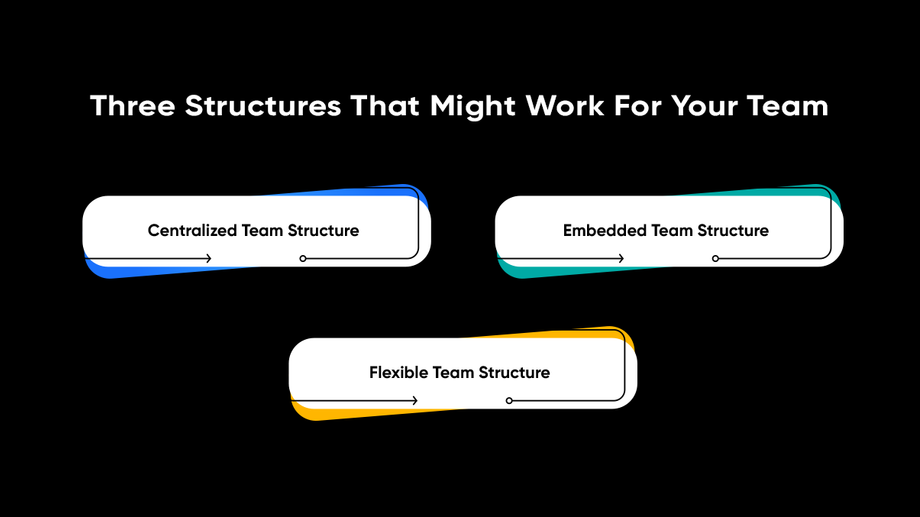At the center of every company, product development is a crucial component that helps it achieve long-term success. No matter what industry you are in, your ability to develop, validate, and launch new products is crucial. A study by the 280 Group showed that optimizing the product development process itself could increase company profits by 34.2%. Dedicated software development teams are often the key to this. This article discusses how to build and manage a product development team that can effectively support you in the product development journey. Let’s dive right in!
The Essential Steps to Build and Manage a Product Development Team
From hiring and leadership to career progression, there are a few things that you need to consider as you go through this process.
- Hiring
When it comes to your product development team, it goes without saying that you want to assemble the best possible people. Provide your outsourcing partner with your business idea so they can help you with the project requirements and technology stack you need for the project. By documenting your requirements and providing general information about your organization, the IT provider can find dedicated software developers who are a good cultural and technical fit. Here are some principles regarding hiring you need to consider-
- Hire for Both Hard and Soft Skills
In the ever-changing world of technology, it's not enough to just hire technical wunderkind. Besides first-class hard skills, they should also possess excellent communication, teamwork, and problem-solving skills. This will help them positively contribute to product and design development.
- Inventory Your Skills
Work on identifying the skills you currently possess and those you lack. By doing this exercise, you will gain a better understanding of the type of skills that you should be seeking from prospective hires.
- Assess Skills in the Right Way
You must use the right skills assessment test for the specific use case when evaluating dedicated software developers. This ensures that you aren't wasting time and resources on irrelevant assessments or candidates who aren't fit for the role.
The 4 Most Important Things to Consider Before Hiring a Dedicated Team
- i) Understand the Product Development Processes
The importance of understanding all the small details involved in software development cannot be overstated. Be clear about the responsibilities of your IT provider and your own to avoid conflicts or misunderstandings.
- ii) Learn What Your Experts Can Do
Learn about your remote experts' skills during interviews and actual work on the project. As with your in-house team, they can be useful in other projects as well. Getting to know your team member's skills and experience can save you time in the future.
iii)Always Sign An NDA
Intellectual property protection and the protection of confidential information will be crucial in 2021. Security and trust are two major concerns when it comes to outsourcing partnerships. Review your IT provider's intellectual property policies and NDAs before the start of the development process to make sure this won't be a problem. It is important to remember that when you hire dedicated developers, you have the option of signing an NDA with each of them.
- iv) Get a Detailed and Transparent Contract
There must be a clear description of the following in the contract you sign:
- Development rates with detailed breakdowns based on the expertise required
- Possible discounts
- Invoices and payment protocols
- Periods and limits of credit
- Conditions and periods of warranty
- Leadership
When you’re building a product, it can be hard to know exactly what the right steps are. But some general rules will help you get there every time.
First and foremost, you need to make sure your team is aligned with a shared vision. Without this alignment, everyone is working in silos and everything takes longer than necessary because people aren’t talking to each other. A good leader knows how to create this alignment by communicating clearly about where he wants the product and the team to go.
Another important rule is creating the right product culture and empowering your team rather than micromanaging them. The best designers and developers don't want to be watched over all the time. Ideally, they would like to be able to work independently and feel that their leaders trust them. A good leader provides resources, direction, and incentives, but then steps back so that everyone can do what they do best.
- Internal Processes
The next step is to make sure your internal operations are set up efficiently and effectively to enable smooth product planning and development. Here are some things to consider:
- Decide on the Right Team Structure
Your product development team needs a solid structure that creates the space where everyone can do what they do best. Get it wrong and your progress will be significantly impeded. Listed below are three structures that might work for your team:
- i) Centralized Team Structure
Your dedicated product development team works under one key decision-maker in this setup. You assign your developers to various projects based on their needs as and when needed. Your developers work as mini-agencies. As a result, you benefit from shared knowledge and experiences. Additionally, you achieve a unified approach to product development throughout the organization. A downside is that your team is somewhat isolated from the rest of the company, resulting in misalignment.
- ii) Embedded Team Structure
In this structure, individual product developers are integrated into cross-functional teams across the organization. This means that each individual is deeply embedded in specific products which are great for focus, but it does result in some duplicated work because other developers might not know exactly what you’re working on.
iii) Flexible Team Structure
Embedded and centralized approaches are combined here. The developers are still integrated into specific teams, but they also report to a head of product development who aims to unify the approach and align everyone. Flexibility can be very valuable, but it can also cause wires to be crossed when team members aren't sure who should report to and who should make the final decision.
- Use Tools That Improve Design-Development Team Collaboration
Great software can be an asset for improving collaboration between your design and development teams. Look out for gaps in your processes, and see if there are solutions to help you tighten them up with other technological tools.
- Create Product Briefs
Without the right context and guardrails in place, product development can quickly expand beyond its original scope. A comprehensive product brief is one of the best ways to do this. They align everyone's expectations and record the direction in which the product is heading.
- Organize Regular Meetings
Throughout your product development journey, you should organize regular meetings for your development team to keep everyone informed about what's going on. As part of the project management process, these meetings serve as a valuable check and balance to ensure all is on track.
Final Thoughts
There you have it, some core principles for building and managing an effective product development team. Implementing these and focusing on the key action steps will elevate your digital product development to a whole new level. Operationally, few things will deliver a better return on investment than getting your product development team on the same page. We recommend rethinking your processes and implementing these best practices as soon as possible. If you're looking for a tool that will help you optimize your product and design development, then check out BrainInventory!


